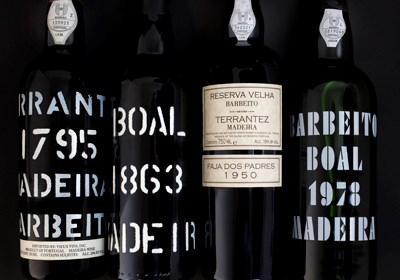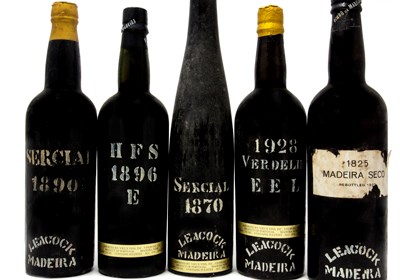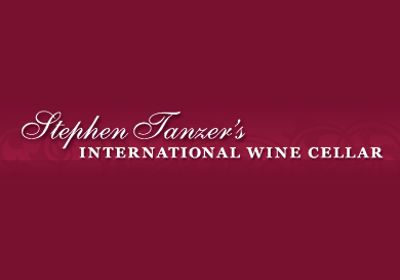
Which site would you like to visit?
By clicking the retail or wholesale site button and/or using rarewineco.com you are choosing to accept our use of cookies to provide you the best possible web experience.
August 10, 2010
If time travel were possible, and we could deposit ourselves at the dinner table of one of the Founding Fathers, we’d surely be drinking Madeira. Madeira was the King of Wines, enjoyed not only before and after dinner, but throughout the meal.
The custom of drinking Madeira with food died out by the beginning of the twentieth century. By then, Madeira was a relic, consigned to your grandparents’ sideboard along with the Sherry. And the idea of an ethereal rainwater Madeira alongside terrapin soup or a rich Bual with the roasted Canvasback duck was forgotten.
Madeira’s revival in America over the past decade has brought with it a renewed appreciation of Madeira as a food wine. I, for one, began to experiment with this in the late 1990s, inspired by research I’d done on Madeira consumption in 18th and early 19th century America. But my first serious foray into the topic was in 1999, when, over a six-month period, I organized a series of eight major Madeira events across the country.
At four of these—Patroon and Judson Grill in New York; the Stonehedge Inn outside Boston; and The Herbfarm in Woodinville, Washington—Madeira was served with virtually every course. And the next spring, I collaborated with David Emil on his “Celebration of Madeira in America” dinner at the ill-fated Windows on the World on April 11, 2000.
All the dinners boasted mind-boggling lineups, each numbering 10 to 14 ancient Madeiras. The Judson Grill and Patroon dinners were both capped by one of the greatest Madeiras ever, 1802 Acciaioli Terrantez; the marquée wines at Windows and Stonehedge included 1862 d'Oliveira Sercial and 1834 Barbeito Malvasia; and among the stars at the Herbfarm were 1832 Acciaioly Terrantez and 1827 Quinta do Serrado Bual.
But these were not merely tastings of fabulous old Madeiras. The real test of each evening’s success was not just the wine, but how the pairings worked. Each chef took his job seriously, and some spent days experimenting with various combinations to find the most magical pairing. At least two chefs, at the Herbfarm and Windows on the World, paid homage to tradition, featuring a terrapin soup, while Windows chef Michael Lomonaco went even further, classically pairing a roasted Muscovy Duck with 1880 d’Oliveira Terrantez. But throughout the menus were elements that were both seasonally appropriate and sure to bring out the best in these very rich, opulent wines: chestnut, oxtail, foie gras, sweetbreads, pigeon and partridge, and for dessert, caramel, souffles, hazelnuts, chocolate and honey.
These evenings combined adventure with classicism, the obvious with the daring, but in all cases the menus were designed to showcase each style of wine from powerful, yet dry, ancient Sercials to luscious, yet profound, Malmseys and Moscatels.
These 1999/2000 dinners were pioneers of their kind, and were followed by a growing appreciation of Madeira as a food wine. Some of the best work over the past decade has been done by my friend Ricardo Freitas of Barbeito. If you visit Barbeito’s website you’ll find Ricardo’s ingenious “food grid,” where he rates the experience you’re likely to get by pairing a number of his firm’s Madeiras (including RWC’s Historic Series wines) with various dishes.
Closer to home, a number of American chefs have been intrigued by how Madeira complements certain dishes. Cindy Wolf at Charleston in Baltimore pairs RWC’s New York Malmsey with her Malmsey-laced mushroom soup. Several years ago, one noted chef paired his smoked torchon of foie gras with Barbeito’s 1978 Sercial, and the results were spectacular. And when Max McCalman was the fromagier at Piccholine in New York, he championed sheep’s milk cheeses with dry Madeiras like Terrantez and Sercial.
But our vote for the most fascinating work goes to Grant Achatz at Alinea in Chicago, whose avant-garde cuisine regularly features Madeira pairings, usually from the RWC Historic Series. Among Grant’s explorations have been Boston Bual with spiced roast goose; New York Malmsey with a chocolate dessert featuring pomelo, egg yolk, and smoke; and Charleston Sercial with a peanut butter and jelly amuse bouche (a combination worthy of mention in The Chicago Tribune).
Among chefs, Grant isn’t alone in discovering the virtues of Charleston Sercial with food. Last October, Chef Mario Batali won over 1000+ guests at the 2009 New York Wine Experience by boldly pairing Charleston Sercial with a wild boar dish of Wolfgang Puck’s creation.
Journalists have also been writing increasingly about Madeira as a companion to food. On December 3rd, Alice Feiring told Wall Street Journal readers that Charleston Sercial is her wine of choice for chestnut soup, noting that it “is like a salted caramel without its sugar.” (By the way, Sercial is not the only Madeira to go wonderfully with chestnut soup: at Patroon in 1999, the chestnut and truffle soup with 1905 d’Oliveira Verdelho was ambrosial.)
And on December 16th, Eric Asimov devoted his entire “The Pour” column in The New York Times to the topic of Madeira with food. He had paired two of our Historic Series Madeiras, Boston Bual and Charleston Sercial, with “a simple main course of skirt steak, charred in a heavy iron skillet and topped with pickled Vidalia onions.” He wrote that “both were sensational with the steak. I give the edge to the sercial, which was sweet in the mouth but dry and tangy after swallowing. But the bual was delicious as well; sweeter, yes, but so well balanced that it complemented the steak and sweet-and-sour onions perfectly.”
In the blogosphere, Deana Sidney has incorporated Madeira with her passion for food history. Since last December, she has written twice about dishes with which Madeira features prominently as both a pairing and a final component, added just before serving: Beef Wellington and Scottish Grouse. The wines Deana used were 1912 and 1850 d’Oliveira Verdelho, respectively.
Madeira with food is very much a work in progress, with few guideposts from the past. American cuisine was far more limited 100 to 200 years ago, and the Madeiras were different, too. Because they were bottled after only a short time in cask, these “glass-aged” Madeiras were paler in color, without the concentrated richness and powerful scents of caramel and fresh roasted coffee beans that a long stay in wood imparts. The latter style really only became common after Phylloxera, when Madeira was much more likely to be left in barrel for decades.
Even though we really only have decades’ worth of experience to go on, a few affinities are already coming into focus. One of the most important is that Madeira’s powerful acidity cuts through fat, making it a noble companion to fatty meats, creamy soups, custards, souffles and rich cheeses. This acidity also helps Madeira work with citrus in some sauces and compotes. Foie gras seems to go well with Madeiras of widely varying sweetness, so long as the wines carry the richness of wood-aging. The nuttiness of youngish Terrantezes and Sercials can pick up the nuttiness in hard and crumbly cheeses, while a richer nut like hazelnut wants a Madeira whose richness has been heightened by time in barrel. The cinnamon-clove spiciness and moderate sweetness of well-crafted Buals can give a lift to curries, while the allspice, cola and sassafras component of many Malmseys makes it a champion with spiced cakes and other desserts and, of course, chocolate.
These ideas only scratch the surface of Madeira’s potential as a companion to food. It’s only by trying and doing, and by sharing our experiences, that we’ll begin to understand which Madeira pairings are truly magical and which aren’t, and most importantly why.
Tom Murnan is one Madeira lover who would like to see a lot more discourse on the subject. I’ve known Tom for years; he attended our epic Chicago Madeira tasting in October 1999, as well as one of our two Leacock Madeira tastings in San Francisco last June. In fact, his report on the Leacock tasting appears in the summer 2010 issue of the International Wine & Food Society newsletter.
Tom also attended our Homage to Mario Barbeito dinner at Quince in San Francisco in April, and when he wrote about it (for Roy Hersh’s For The Love of Port newsletter), he went beyond the usual Madeira tasting notes, giving his frank assessment of the success or failure of each pairing. Our thanks to Roy Hersh for giving access to non-subscribers here.
There are many signs that interest in Madeira with food will continue to grow, but it’s important to understand two simple facts. The first is that, up to this point, even few wine professionals know much about how and why Madeiras work with certain dishes and not with others. What are the critical aspects? Is it the flavor, texture or sweetness, and how important is Madeira’s acidity and relatively high alcohol content?
The second fact is that Madeira is so different from other wines that even the most talented and experienced chef may miss the mark unless the dish is developed with the same or similar Madeira available for tasting. With time, and much experience, chefs may be able to wing it, just as they do with Bordeaux, Burgundy and Super Tuscans, but for now, there is simply no substitute for having a glass of the Madeira at the chef’s elbow.




New discoveries, rare bottles of extraordinary provenance, limited time offers delivered to your inbox weekly. Be the first to know.
Please Wait
Adding to Cart.
...Loading...


By clicking the retail or wholesale site button and/or using rarewineco.com you are choosing to accept our use of cookies to provide you the best possible web experience.

